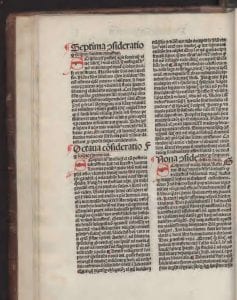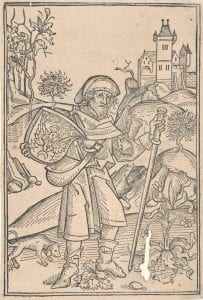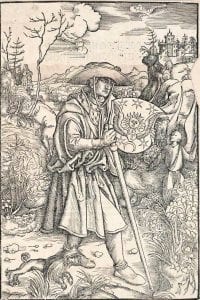The Gerson incunabulum
The University of Melbourne’s Rare Book Collection holds around 30 incunabula, or early printed books and these are all digitised. ‘Incunabula’ is a term given to books produced in the cradle days of book printing, generally pre-1500, and they are distinct from manuscripts, which are hand-written. One of the University’s incunabula was published in 1489 and was authored by Jean (Johannes) Charlier de Gerson (1363-1429), a French scholar devoted to the study of the Catholic Church, who published extensively throughout his life. The title Opera means ‘Work’, and the book appears to be one of three volumes comprising a treatise on the Catholic Church. This first volume is subtitled Prima pars operii Johannes Gerson, meaning ‘The first part of the works of Johannes Gerson’.

The typography is a plain Gothic type, and the text features substantial rubrication, or the addition of red highlighting or markings to a text after it has been printed which may be seen in a sample page. Even after the advances of printing, rubrication often continued to be done by hand, however, if there was substantial rubrication throughout a text, it may have been produced by a second printing using red ink. Dr Margaret M. Smith has stated that in early texts rubrication was not done for the purpose of decoration (as illumination would usually have been) but for articulation. Highlighting headings, the beginning of new sections, or noteworthy points was the equivalent of modern punctuation. [1.]
The Gerson incunabulum contains one woodcut, on the verso of the title page: an image depicting Gerson dressed as a pilgrim. This woodcut has been attributed to Albrecht Dürer by Willi Kurth and Arthur Hind [2.].The image is comparable with two prints found in the University of Melbourne’s Print Collection. Both woodcuts came from the Poynton donation, and one is similar in appearance, and is indeed dated to 1488, while the other is from a later date, probably 16th century. The artist of both of these prints are unknown.



Charlotte Mills
Special Collections and Grainger Museum Blogger
References
[1.] J. Walworth, “Rubrication: articulation, not decoration”, Bodleian Library blog, 29 January 2009, accessed 4th September 2018.
[2.] A.M. Hind, An introduction to a history of woodcut: with a detailed survey of work done in the fifteenth century, New York, Dover Publications, 1963, and W. Kurth (ed.), “The complete woodcuts of Albrecht Dürer, London, W. & G. Foyle, 1927.
Categories
Leave a Reply